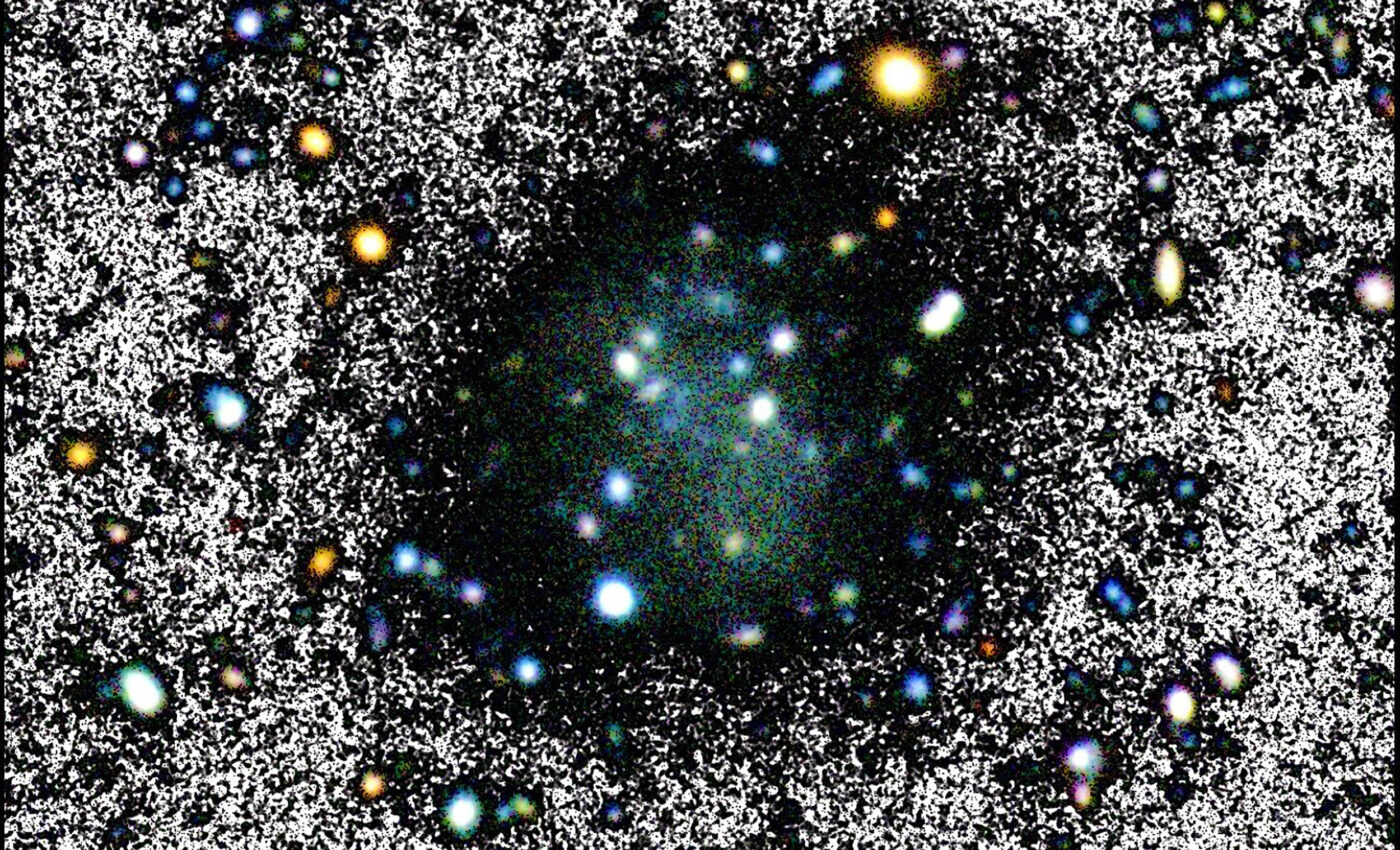
Galaxy named "Nube" is almost invisible, leaving astronomers baffled
In the realm of cosmic discoveries, a recent addition stands out for its unique and elusive nature. The “Nube” galaxy, a name charmingly suggested by a five-year-old, has captured the attention of astronomers for its almost ghostly presence in the universe.
This discovery, led by the Instituto de Astrofísica de Canarias (IAC) in collaboration with the University of La Laguna (ULL) and other institutions, marks a significant leap in our understanding of the cosmos.
Cosmic whisper of the Nube galaxy
Nube, Spanish for “Cloud,” is an apt descriptor for this enigmatic dwarf galaxy. Its surface brightness is so faint that it evaded detection in previous sky surveys.
The galaxy’s stars are dispersed across a vast area, making Nube appear as a mere wisp in the cosmic landscape.
What sets Nube apart are its extraordinary properties. This galaxy is ten times fainter and more extended than other known dwarf galaxies with a comparable number of stars.
To put it in perspective, Nube is a third of the Milky Way‘s size but has a mass akin to the Small Magellanic Cloud.
Nube’s mysteries: Defying astronomical norms
Such extreme characteristics baffle astronomers, as Mireia Montes, the first author of the article and a researcher at the IAC and the ULL, admits.
“With our present knowledge, we do not understand how a galaxy with such extreme characteristics can exist,” said Montes.
The discovery of Nube was serendipitous. Ignacio Trujillo, the second author, was analyzing images from the Sloan Digital Sky Survey (SDSS) when he noticed an intriguing faint patch.
This led to a focused study using ultra-deep multicolor images from the Gran Telescopio Canarias (GTC), confirming that the patch was not an error but an extremely diffuse object.
Bringing the Nube galaxy into focus
Determining Nube’s exact distance has been challenging due to its faintness. Observations from the Green Bank Telescope (GBT) in the United States place Nube approximately 300 million light years away.
Upcoming observations with the Very Large Array (VLA) radio telescope and the optical William Herschel Telescope (WHT) at the Roque de los Muchachos Observatory, La Palma, are anticipated to refine this estimate.
Trujillo notes, “If the galaxy turns out to be nearer, it will still be a very strange object and offer major challenges to astrophysics.”
Rewriting the rules of the cosmos
Nube defies the general rule of galaxies having a higher density of stars in their inner regions.
Montes explains that in Nube, “the density of stars varies very little throughout the object, which is why it is so faint, and we have not been able to observe it well until we had the ultra-deep images from the GTC.”
The galaxy’s peculiar nature has left astronomers puzzled. Current cosmological simulations, based on the cold dark matter model, fail to replicate Nube’s extreme characteristics.
This discrepancy suggests that there might be fundamental aspects of the universe that we have yet to understand.
Montes expresses the intriguing possibility that, “We are left without a viable explanation within the currently accepted cosmological model, that of cold dark matter.”
Nube’s implications and future research
The study of Nube could potentially revolutionize our understanding of the universe. Trujillo speculates on an exciting hypothesis: the unusual properties of Nube could indicate that dark matter particles have an extremely small mass.
This could align the worlds of quantum physics with cosmic phenomena, potentially offering a new window into the understanding of the universe.
Trujillo concludes, “If this hypothesis is confirmed, it would be one of the most beautiful demonstrations of nature, unifying the world of the smallest with that of the largest.”
In summary, the discovery of the Nube galaxy opens a new chapter in astronomy, presenting both a challenge and an opportunity to deepen our cosmic knowledge.
Its unique properties are unique curiosity that could be key to unlocking new cosmic mysteries, possibly reshaping our understanding of the universe itself.
The full study is published in the journal Astronomy & Astrophysics.
—–
Like what you read? Subscribe to our newsletter for engaging articles, exclusive content, and the latest updates.
—–
Check us out on EarthSnap, a free app brought to you by Eric Ralls and Earth.com.
—–













